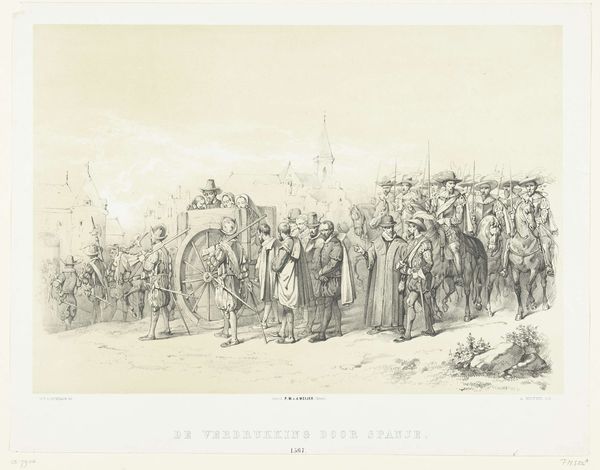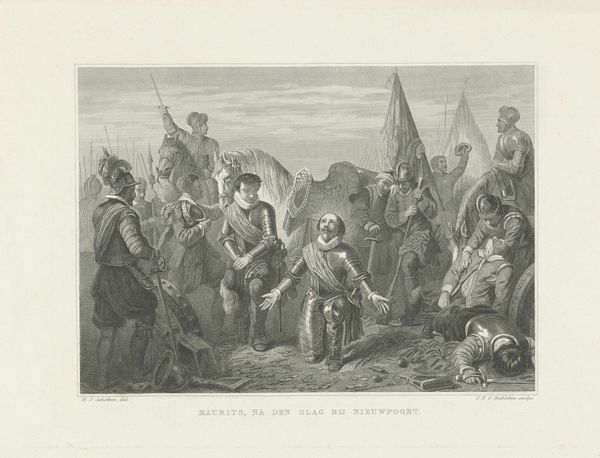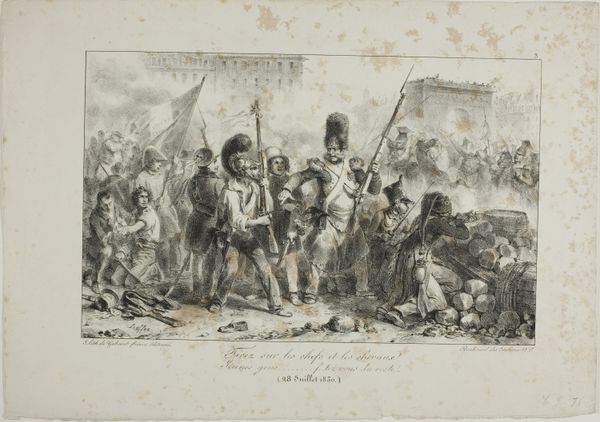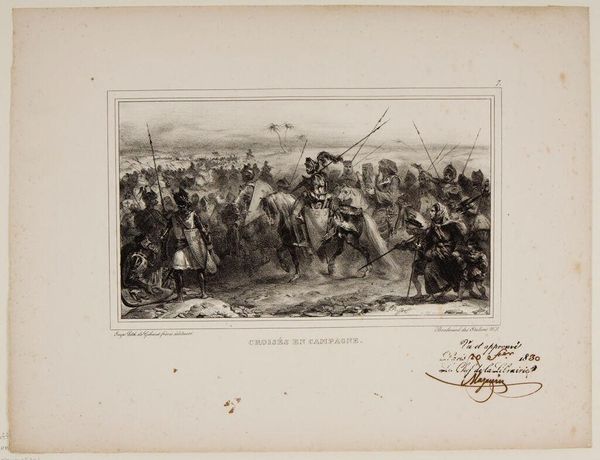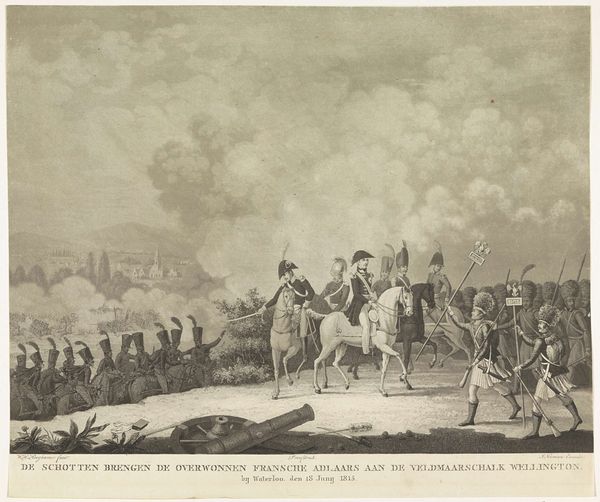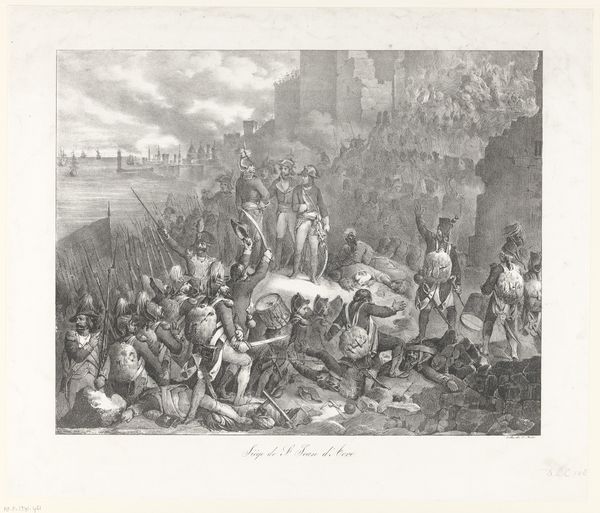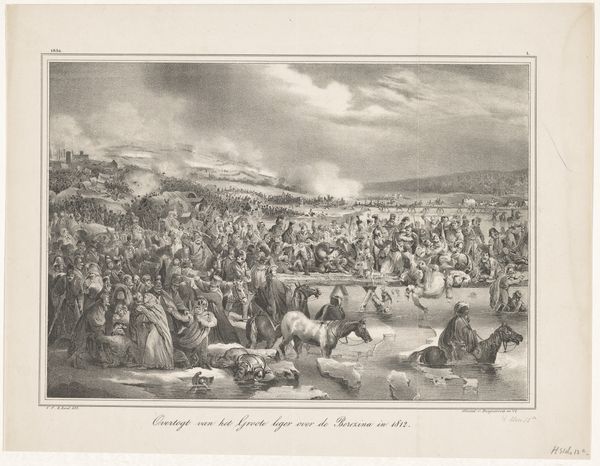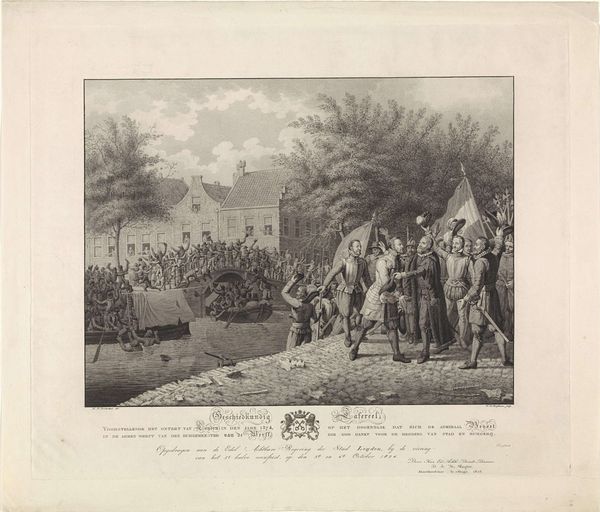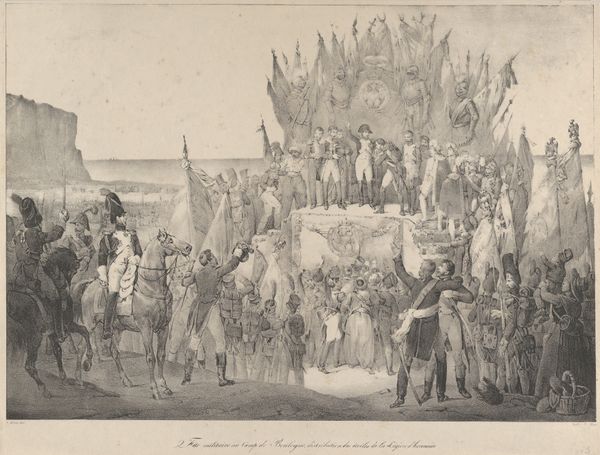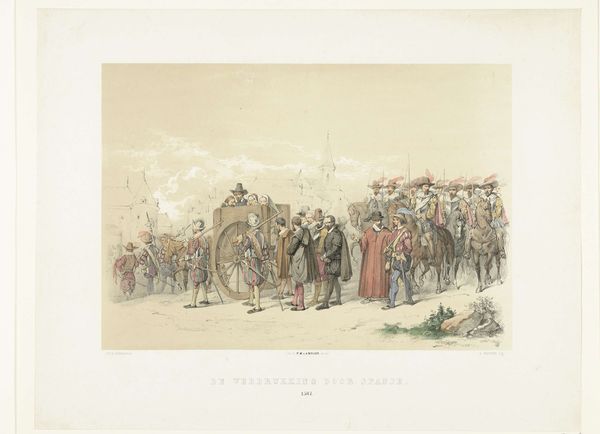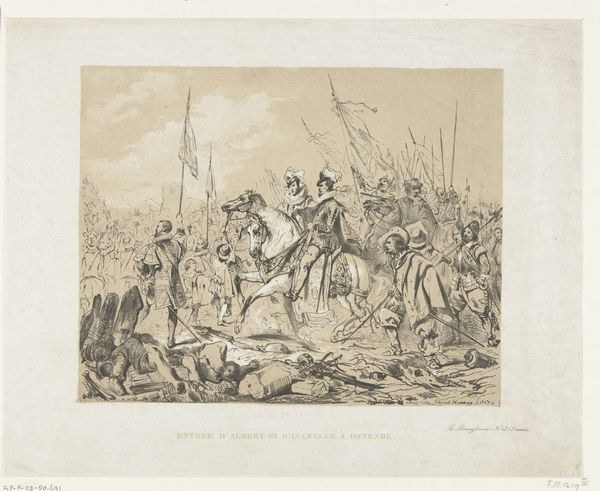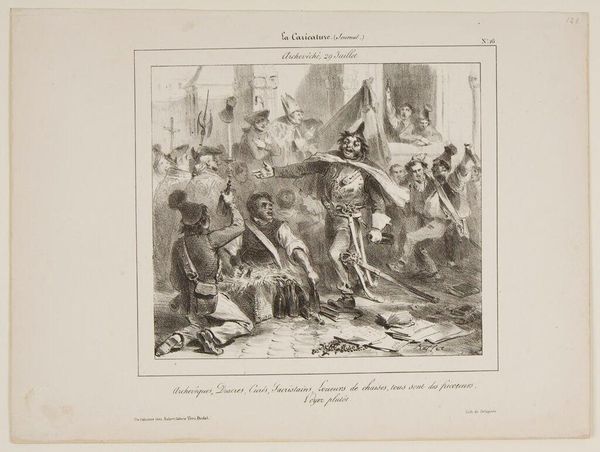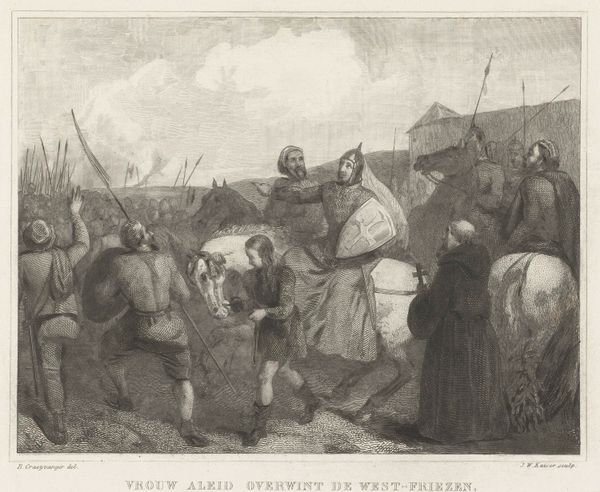
The Grand Review of the Juste-Milieu Passing La Caricature, October 30, 1832 (Grand revue passée par la caricature le 30 Octobre 1832) 1832
0:00
0:00
drawing, lithograph, print
#
drawing
#
16_19th-century
#
lithograph
# print
#
caricature
#
romanticism
#
history-painting
Dimensions: sheet: 13 15/16 x 21 1/8 in. (35.4 x 53.7 cm) image: 11 9/16 x 20 3/16 in. (29.4 x 51.3 cm)
Copyright: Public Domain
Artist: Here we have "The Grand Review of the Juste-Milieu Passing La Caricature, October 30, 1832" by Charles Philipon, a lithograph from 1832. At first glance, it strikes me as this bustling, chaotic scene, a real flurry of activity frozen in ink. What grabs you? Art Historian: Well, initially, I’m drawn to the figure on the…donkey? Is it supposed to be a donkey constructed from discarded documents? It creates an immediate impression of subversion, like a deliberate undermining of the solemn procession taking place. All those documents! Artist: Precisely! Philipon uses the "Juste-Milieu"—the "Middle Ground" politicians—as his target here, picturing them as bloated figures marching along. What about the symbolism of the "donkey"? Art Historian: Donkeys often symbolize stubbornness or ignorance, especially in political contexts. The fact it's built from paper perhaps signifies that the power and authority these figures possess is flimsy. I guess a modern metaphor would be "built on sand"? It suggests their ideology is unfounded. They seem ready to topple. Artist: The comedic choice feels intentional. Philipon wanted to lampoon these guys! I think the entire piece drips with scorn for political figures. Notice how much larger that donkey and rider are, much more prominent than the politicians. This isn’t some respectful record. The figures become puppets, paraded and then mocked, it is interesting they appear ready to trample upon the text! Art Historian: Right! The papers strewn on the ground look like discarded ideas or broken promises. It adds to the sense of societal upheaval or, at least, the potential for it. What I love is the layers upon layers. Look how some faces seem more human compared to caricatures. I wonder if they got Philipon riled up specifically? Artist: Maybe so. What is beautiful in the end is its chaotic freedom! Its subversive style—questioning figures of authority in the process. To produce a piece with this energy—well it seems as though that is always necessary. Art Historian: Definitely! Images like these function as visual reminders. That political hubris rarely survives the satirical eye. Artist: Thanks for speaking with me! It gives one a lot to consider in its composition and symbols. Art Historian: Thanks. Looking at such historical political art can have an uncanny knack of being eerily relevant in the present!
Comments
No comments
Be the first to comment and join the conversation on the ultimate creative platform.
